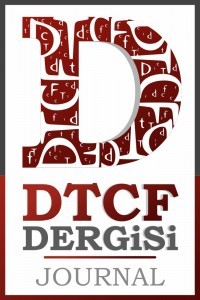GENETİK VE KAMUSAL ALAN
Genetik bilgi, insan gruplarının tarihini, çeşitliliğini ve kökenini anlamaya büyük katkılar sağlamasının yanı s ıra ırksal kategorilerin tartışmaya açılması bağlamında önemli bir araçtır. Ne yazık ki hem dünyada, hem de Türkiye’de genetik çalışmaların etnik veya ırksal grupların ‘genlerini’ veya ‘kökenlerini’ araştırdığı yönünde önemli bir yanlış anlama vardır. Bunun ötesinde, ‘genetik,’ ‘DNA,’ ‘moleküler’ gibi bilimsel terimler, bilimsel bilgi üretimi sürecine hiç bir referans vermeksizin etnik kimlikleri meşrulaştırmak amacıyla kullanılmaktadır. Bu durum, Türkiye’nin politik olarak çalkantılı ve bilimsel olarak kırılgan kamusal alanında daha da sorunlu hale gelmektedir. Anadolu’daki zengin kültürel ve genetik çeşitliliği anlamak için birçok çalışma yapılmıştır. Bu çalışmalar Anadolu tarihi için çok önemli akademik bilgiler üretmelerine karşın, kamu alanını bilgilendirmede çok eksik kalmıştır. Bu hem genetik bulguların kısıtlı bir bilimsel çevrede sıkışmasına yol açmış, hem de, daha vahimi, etnosentrik grupların genetik bilgiyi çarpıtarak kullanmasına zemin hazırlamıştır. Özellikle, Türkiye’nin politik ve sosyal bağlamında yerel kimliklerin hâlâ tam olarak kabul edilmediği ve ulusal ideolojinin hâlâ etnosentrik düşüncelerle yakın ilişki içinde olduğu düşünülürse, bilim insanlarının kamusal erişimi daha da önem kazanmaktadır. Bu yüzden Türkiye’de yapılan moleküler antropoloji çalışmalarının, bilim insanları tarafından, hem çalışılan gruplara hem de kamuya açıklanması, akademi içinde oluşturulan kurullar tarafından denetlenmesi gereken etik bir zorunluluktur.
Anahtar Kelimeler:
Genetik, Antropoloji, Etik, Kamusal Alan, DNA, Populasyon, Irk, Türkiye
Genetic and Public Sphere
Genetic information has contributed significantly to our understanding of the history, diversity and origins of humas. In addition, geneticists have been in the forefront in deconstructing the racial categories by showing that most of the human genetic diversity is within groups. Unfortunately, genetic research is poorly communicated within the public sphere and there is a misconception that the genetic research studies the origins and genetic make-up of racial group. Furthermore, scientific terms like ‘genetics’, ‘DNA’, ‘molecular’ are used to legitimize the ethnocentric identities without referring to the actual process of scientific knowledge production. This situation is more problematic in Turkish public sphere, which is politically agitated and scientifically feeble environment. There have been numerous studies to addressing the rich cultural and genetic diversity through Anatolia. In spite of producing very important academic information about Anatolian history, these studies have failed to be communicated with the public. This lack of communication is not only confined the genetic information to a limited academic circle, but also, and much gravely, has laid the work ground for ethnocentric groups to distort the genetic information. The distortion of genetic information is particularly troubling in Turkey, where ethnocentric ideas have major discursive space in the public sphere, whereas the local identities have been ignored. Therefore, it is crucial for researchers, Turkish and foreigner alike to put extra effort to communicate their research with the Turkish public. The accurate and full explanation of the population genetic research to study populations, and to general public is an ethical necessity and should be maintained by academic watchdogs.
Keywords:
Genetic, Anthropology, Ethic, Public Sphere, DNA, Population, Race, Turkey,
___
- Anadolu Populasyon Tarihi Projesi. http://anatolianproject.googlepages.com
- CALAFELL F., P. Underhill, A.Tolun, D. Angelicheva, and L. Kalaydjieva (1996). “From Asia to Europe: Mitochondrial DNA Sequence Variability in Bulgarians and Turks”. Ann Hum Genet 60:35-49.
- CİNNİOGLU C., R. King, T. Kivisild, E. Kalfoglu, S. Atasoy, GL. Cavalleri, AS. Lillie, CC. Roseman, AA. Lin, K. Prince, PJ. Oefner, P. Shen, O. Semino, LL. Cavalli-Sforza, and PA. Underhill (2004). “Excavating Y-chromosome Haplotype Strata in Anatolia”. Hum Genet 114:127-48.
- COMAS D., F. Calafell, E. Mateu, A. Perez Lezaun, and J. Bertranpetit (1996) “Geographic Variation in Human Mitochondrial DNA Control Region Sequence: The Population History of Turkey and its Relationship to the European Populations.” Molecular Biology and Evolution. 13:1067-1077.
- DI BENEDETTO G, A. Erguven, M. Stenico, L. Castri, G. Bertorelle, I. Togan, and G. Barbujani (2001) “DNA Diversity and Population Admixture in Anatolia”. Am J Phys Anthropol 115:144-56.
- GÖKÇÜMEN Ö. (2007) “Genetics and Identity”, Antropoloji Dergisi 22.
- GÖKÇÜMEN O. ve T.G.Schurr (2008). “Genler, Göçler ve Anadolu.” Atlas Dergisi.
- GÜLTEKİN T., Ö. Gökcümen (2009) “Genetik Bilgi ve Antropoloji” Tübitak Bilim Teknik Dergisi, 494.
- LONG And Kittles (2003) “Human Genetic Variation and the Nonexistence of Human Races”. Human Biology 75(4):449-471.
- PEARCE, N., S. Foliaki, A. Sporle and C. Cunningham, (2004). “Genetics, Race, Ethnicity and Health”. British Medical Journal 328:1070-1072.
- SCHURR, TG. (2004) “Peopling of the New World: Perspectives from Molecular Anthropology”. Annual Review of Anthropology, 33:551
- UNESCO İnsan Genetik Verileri Konusunda Uluslararası Bildirge Taslağı (Draft International Declaration on Human Genetic Data) http://unesdoc.unesco.org/images/0013/001304/130464e.pdf
- REBATO, E., (2007). “On the Concept of Race: the Human Diversity”. In Essentials of Biological Anthropology. edited by P. Blaha, C. Susanne and E. Rebato, Praha: Karolinum Press. 133-139.
- Yayın Aralığı: Yılda 2 Sayı
- Başlangıç: 1942
- Yayıncı: Ankara Üniversitesi
Sayıdaki Diğer Makaleler
İLHANLI İRAN MOĞOLLARI ORDUSUNDA HİYERARŞİ: ASKERÎ YETKİLİLER VE NİTELİKLERİ
FİRDEVSÎ-İ RÛMÎ’NİN BİR MÜNAZARASI
ENFORMASYON VE BİLGİ KAVRAMLARI BAĞLAMINDA ENFORMASYON YÖNETİMİ VE BİLGİ YÖNETİMİ
Altın Mobius Şeridi: Parçalı Bir Anlatı Olarak Lessing’in “Altın Defter”i
ÇAĞDAŞ KORE ROMANININ KURUCUSU GOVANG-SU İ VE MERHAMETSİZ YAŞAM ADLI ESERİ
